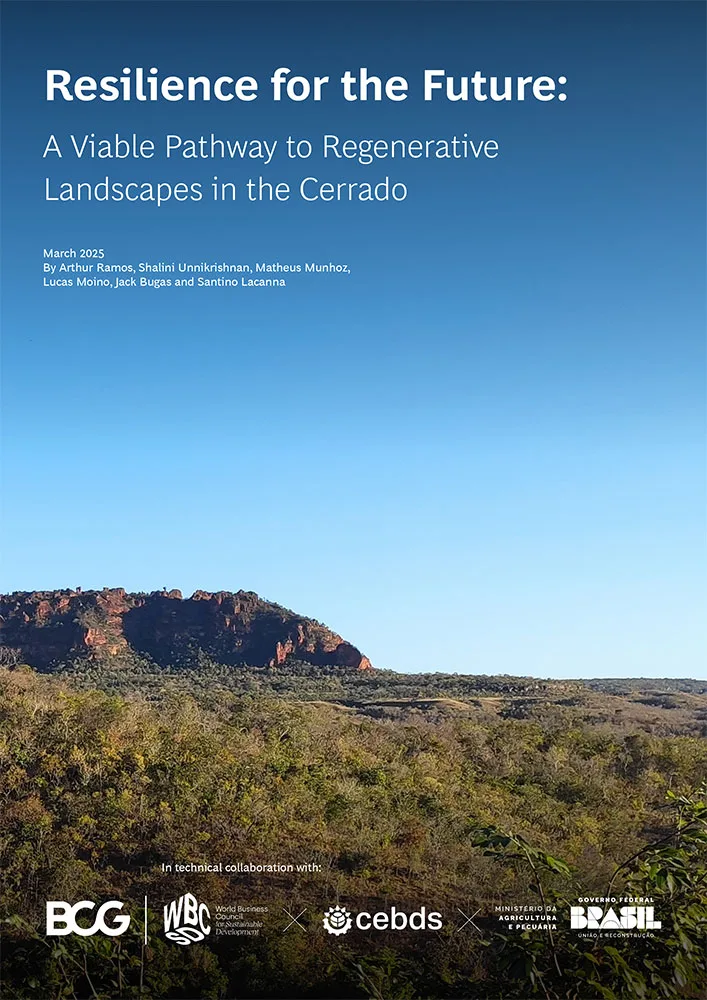This report, developed by BCG, in collaboration with WBCSD, CEBDS, and the Brazilian Ministry of Agriculture and Livestock Farming (MAPA) builds on an extensive knowledge base and expert insights to outline the potential impact of regenerative agriculture and sustainable land use within landscapes and a pathway for its widespread implementation in the Cerrado. It highlights how these regenerative landscapes can address multiple objectives, balancing environmental sustainability with economic growth.
The Brazilian Cerrado: agriculture and biodiversity powerhouse. Spanning almost 200 million hectares, the world’s most biodiverse savannah plays a central role in global agricultural production. It harbors 30% of Brazil’s biodiversity and 5% of all known species while producing 25% of the world’s soy, 6% of beef, 27% of sugarcane, 9% of cotton and 6% of corn. By 2050, the Cerrado is projected to account for 70% of Brazil’s soybeans and nearly half of its beef, expanding Brazil’s influence on the global food stage and reinforcing the Cerrado’s vital role in agriculture and conservation.
Production and conservation go hand in hand. Across 32.3 million hectares – one Norway – there is an opportunity to adopt regenerative practices. Of these, 23.7 Mha are pastureland with some level of degradation that can be restored, generating 13–22% IRR with payback in 7–9 years. The remaining 8.6 Mha are cropland that could increase adoption of regenerative practices, delivering IRR of 16–29% with payback in 3–5 years. A BCG survey with farmers in the region confirms that they are ready to make this shift, provided they have access to financing and technical assistance.
Time to scale is now. Transitioning the Cerrado represents a US$55 billion investment opportunity through 2040, with average 19% IRR. Some landscapes in the region could reach IRR as high as 29%. Approximately US$1 billion in blended funding are needed through 2030 to mitigate early-stage risks. Around 85% of the funding could come from private investments, supported by reliable systems for measurement, monitoring, reporting, and verification, scalable financial instruments, and trusted partnerships with producers on the ground.

